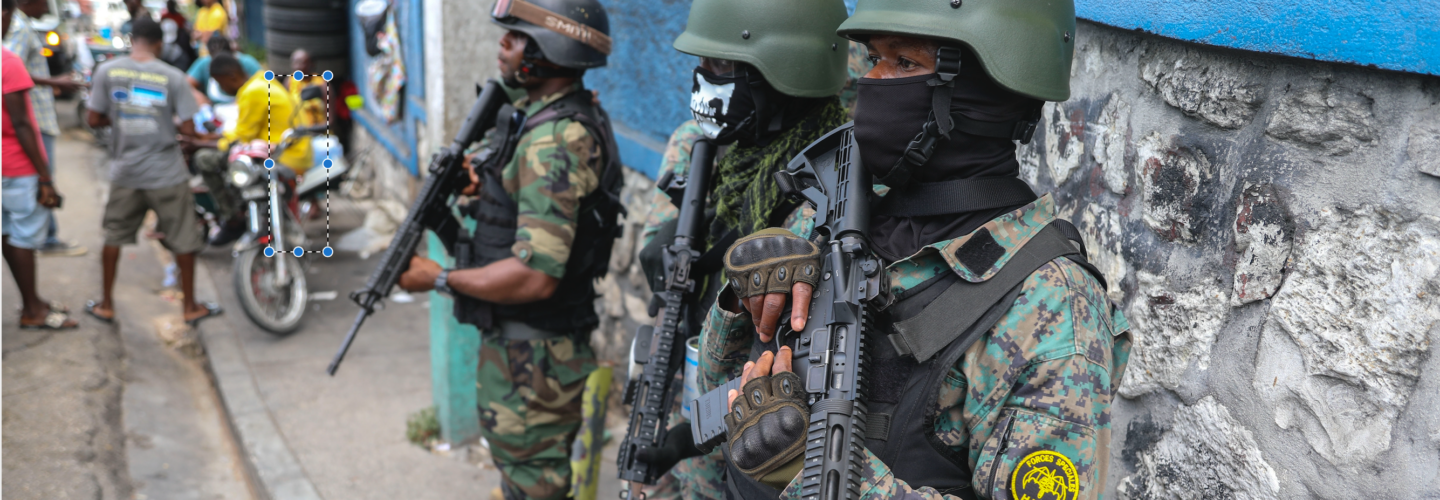Haitian police officers stand guard outside the office of the prime minister in preparation for the swearing-in of a transitional council tasked with selecting a new prime minister and cabinet, in Port-au-Prince, Haiti, Thursday, April 25, 2024. (AP Photo/Odelyn Joseph)
Since the early 1990s, there have been no fewer than seven civilian, police, and peacekeeping missions led by the United Nations (UN) in Haiti.[1] The fact that a UN-authorized police mission is once again on the table testifies to the failure of past interventions to consolidate lasting peace. So, too, does the unwillingness of many previous interveners (such as the United States, Canada, and Brazil) to commit police officers and the UN Security Council’s choice to authorize but not lead the mission. Recent interventions were particularly marred by the introduction of cholera by UN peacekeepers and the organization’s subsequent failure to take responsibility for the epidemic, as well as widespread reports of sexual exploitation and abuse (SEA). This history is rightly mentioned as a warning in discussions on a potential future intervention.
Yet it is worth stressing that the problem with past international interventions was not only the cholera epidemic and SEA but also, and maybe primarily, these interventions’ privileging of stability over democracy and the consequent security and political approach. In current discussions of intervention, the fact that previous missions spent considerable time and effort attempting—and failing—to reinforce the Haitian National Police (PNH) and assist them in tackling gang violence generally goes unmentioned even though these are precisely the tasks that the new mission has been mandated to carry out. The largest and longest preceding mission (MINUSTAH, 2004–2017) was given a multidimensional mandate much more ambitious than the recently authorized Kenyan-led police intervention, which would primarily aim to improve security. Despite these important differences, the current focus on gangs eerily echoes MINUSTAH’s first years. Read more





